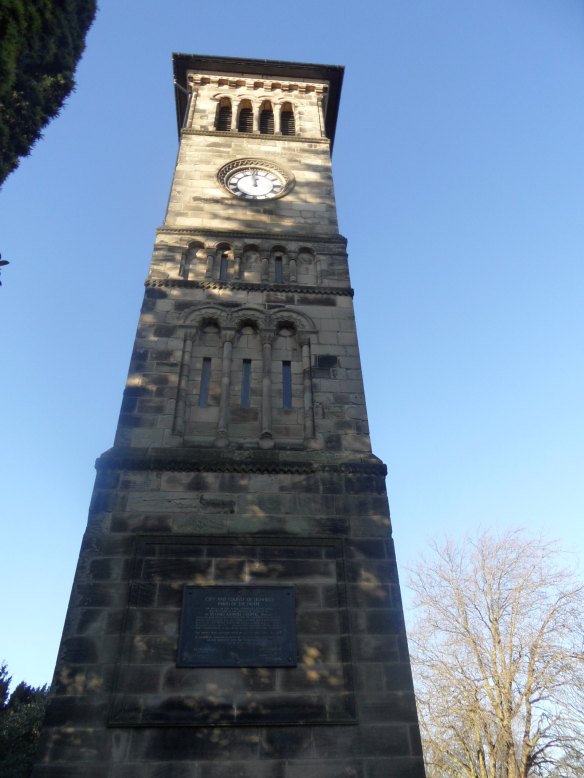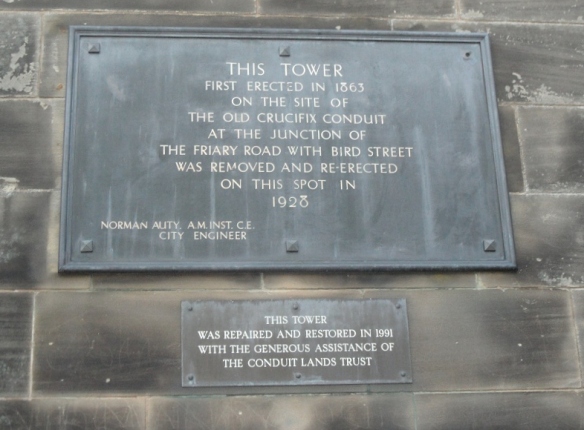 I went to Birmingham archives today, to hopefully see some records that would reveal more about the now demolished Elford Hall, on the Tamworth/Lichfield border.
I went to Birmingham archives today, to hopefully see some records that would reveal more about the now demolished Elford Hall, on the Tamworth/Lichfield border.
Why did I have to go into Birmingham to see the records of somewhere in Staffordshire? Well, the Elford Estate has been under the ownership of Birmingham City Council since 29th September 1936. It was given by Mr Francis Howard Paget for the ‘healthy recreation of the inhabitants of the City of Birmingham’. Mr Paget took the decision to donate his Staffordshire estate to a public body, after he witnessed his friend being blinded by a grenade in the trenches of WWI.

Council House, Birmingham.
The records I looked at today were the minutes of the Elford Hall committee meetings held at the Council House between July 1936 and June 1945. I may be wrong, but I get the impression that the committee which included the Lord Mayor of Birmingham, weren’t quite sure how to make best use of this generous gift, especially the Hall. There is talk of the Municipal Officers Guild taking over house & gardens as a rest home for members of staff, or if not them the NUT. Whilst such decisions were being made, the Estate Agent’s report of December 1937 tells how the Hall was ‘being kept aired as far as possible. Some bedding & soft furnishinings stored.’ He also suggests that pensioners from the estate should be recruited as park keepers to look after the grounds, with the assistance of a woman from Fisherwick.
Elford Hall’s history had already been changed by one war and then a second, different conflict also left its mark. On 21st May 1937, almost 4,000 Basque children seeking refuge from the Spanish Civil war arrived in Britain. Some were eventually sent to Elford. There are only a few mentions of this in the minutes – in the meeting notes dated 12th June 1939, the committee was reminded that since their last meeting, arrangements had been made, after consultation with Mr Paget to accommodate number of Spanish children at Elford Hall. Also, in December 1938, when an application for the hall to be used to house young German male refugees (who after agricultural training would be sent to Palestine) was rejected on the grounds it was fully occupied by Spanish children. However, it seems that by the time the committee went to visit in June 1939, the Hall was once again vacant. It was recorded that the Hall had sustained a considerable amount of damage.
Other subsequent applications for use (German/Czechoslovakian refugees and as a children’s hostel) were deemed unsuitable. On 17th July 1939, another suggestion – a convalescent home – was put forward. I imagine such discussions were interrupted by the declaration of war less than two months later. The only other reference I could find to the Estate during the period the records covered (June 1936 to June 1945) was in July 1940, when an allegation of trespass and damage to trees & fences by soldiers manning a searchlight at Elford was made. The Hall was demolished in 1964 but as I mentioned in my The Garden of Elford post, the walled garden and some of the associated buildings are in the process of being restored.
There wasn’t as much information on the Basque refugees as I had hoped. There is however some uncatalogued material held at the library which may add to the story and which I will seek out in the not too distant future.
Edit:
Whilst having a look at Mr Paget’s family tree, I found out that his daughter, Elizabeth Beatrice Rochfort-Boyd had been a prisoner of war at Camp Holmes in the Philipines. In September 1943 she wrote to her father, as can be seen here. Elizabeth was born in January 1913, making her around 30 years old at the time of her imprisonement. The Camp was liberated in February 1945.
Mr Francis Howard Paget died on 9 April 1945 aged 58 at his home in Kent.
Edit 2:
For context, I found a news report dated 28th April 1937 from The Guardian archive regarding the bombing of Guernica, which can be read here.
Also a 10 minute report from the Witness program on the BBC World Service, in which Snr. Hermino Martinez talks about his evacuation can be listened to here. This doesn’t directly relate to Elford but gives some idea of the experience of the Basque evacuees.
Also of interest is an article in The Black Country Bugle about the Basque children who stayed at Aldridge Lodge in Walsall. You can read it here.
Edit 3: A report in the Lichfield Mercury edition of August 13th 1937 describes a meeting of Elford Parish Council. The refugees were due to arrive at Elford in mid-August and the meeting records the concerns of the Council about the effect that housing the refugees in the Hall may have on the village.
Sources:
Elford Hall Sub-Committee Minutes 1936 to 1945
www.elfordhallgarden.org.uk/history
http://www.basquechildren.org





















